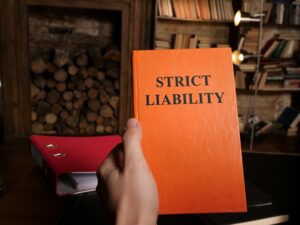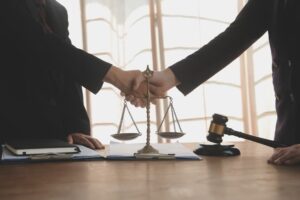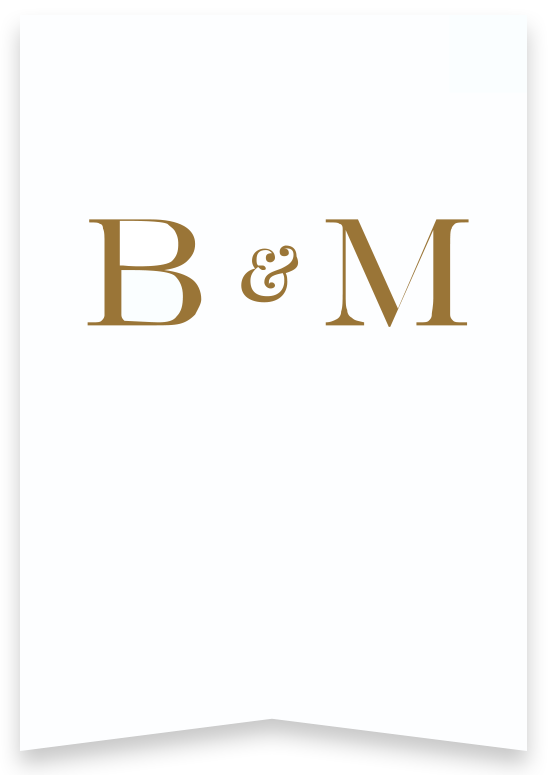What is Strict Liability Law?
What is Strict Liability Law?
Strict liability law plays a unique role in personal injury cases, creating an exception to the general rule that negligence must be proven for a claim to succeed. Under strict liability, someone can be held legally responsible for harm caused by their actions or products, regardless of whether they acted with care or intent. This concept shifts the focus from behavior to responsibility, and it’s most commonly applied in areas like defective products, abnormally dangerous activities, and injuries caused by animals.
When strict liability applies, your path to compensation becomes less about proving someone’s carelessness and more about showing a connection between their product or activity and your injuries. Working with a Orange County personal injury attorney ensures you understand how this principle fits your specific case and helps you take the right steps to protect your claim.
Schedule a Free Initial Consultation
The Foundation of Strict Liability
Strict liability rests on the idea of accountability. Certain activities or products carry inherent risks, and those responsible for them should bear the consequences if something goes wrong. In these cases, courts focus less on whether someone took reasonable precautions and more on whether their actions or products led to harm.
For example, if a manufacturer releases a defective product that injures you, strict liability can hold them accountable even if they took reasonable steps to ensure safety during production. Similarly, if someone engages in inherently dangerous activities, like using explosives, they can face liability for any resulting harm, even if they exercised extreme caution.
By shifting the burden of responsibility in this way, strict liability law helps protect individuals who might otherwise struggle to prove negligence. It also creates an incentive for manufacturers and others to prioritize safety.
Strict Liability and Defective Products

Strict liability is a legal doctrine that frequently applies in product liability cases. Under this principle, if a defective product has injured you, you may not need to prove the manufacturer acted negligently. Instead, you must demonstrate three key elements: the product was defective, the defect made the product unreasonably dangerous, and the defect directly caused your injury.
Product defects that result in strict liability typically fall into one of three categories: manufacturing defects, design defects, or failures to warn.
Manufacturing Defects
Manufacturing defects occur when something goes wrong during production, resulting in a dangerous product. Even if the product was designed to be safe, errors in manufacturing can introduce hazards. Consider a chair with a cracked leg that collapses under normal use. The flaw occurred during production, making the product unsafe despite a sound design.
Design Defects
Unlike manufacturing defects, design defects stem from inherent flaws in the product’s design. These defects make the product dangerous even when manufactured correctly. For instance, a car with a fuel tank positioned in a location prone to explosion during rear-end collisions can be considered defectively designed. In such cases, the danger is built into the product’s very blueprint.
Failure to Warn
The third category of product defects involves failing to provide users with adequate instructions or warnings. Manufacturers must inform consumers about the potential risks of using their products. If they fail to do so, strict liability may apply. A classic example is a medication that omits warnings about severe side effects, leaving users unaware of potential harm. The manufacturer may be held strictly liable when such omissions lead to injury.
Personal Injury Lawyers and Defective Product Cases
A personal injury lawyer plays a critical role when dealing with injuries caused by defective products. They help determine whether a defect exists, identify the type of defect involved, and establish a connection between the defect and your injury. Furthermore, they ensure you understand your rights under strict liability laws and guide you through the process of seeking compensation from the responsible party.
Inherently Dangerous Activities and Strict Liability
Strict liability extends beyond defective products and applies to certain inherently dangerous activities. These activities, also called abnormally dangerous or ultrahazardous, carry significant risks even when performed with the utmost care. When someone suffers an injury due to such an activity, the person or entity conducting it can be held liable regardless of the precautions they took.
Examples of Abnormally Dangerous Activities
Inherently dangerous activities include those that pose high risks to others due to their nature. Examples include handling explosives, transporting hazardous chemicals, or using toxic substances in industrial operations. These activities are considered so dangerous that even rigorous safety protocols can’t entirely eliminate the potential for harm.
The Principle Behind Strict Liability
The law imposes strict liability in these cases to ensure that those who engage in such activities – and often benefit financially from them – bear the responsibility for any resulting harm. This approach protects individuals and communities exposed to these risks without their consent or involvement.
Real-World Application
Consider the example of a company transporting volatile chemicals through a residential neighborhood. If an accident occurs and a chemical spill causes injuries to residents, strict liability can apply. In such a scenario, the injured individuals wouldn’t need to prove that the company acted negligently or failed to follow safety procedures. Instead, they will only need to show that the company’s actions, such as transporting the chemicals, directly caused their harm.
By holding those engaged in inherently dangerous activities strictly liable, the law prioritizes the safety and well-being of the public over the financial interests of the party conducting the activity.
Animal-Related Injuries
Strict liability often applies in cases involving injuries caused by animals. While laws differ by state, many jurisdictions impose strict liability on animal owners for harm caused by their animals. Dog bite cases are among the most common scenarios for applying this legal principle.
Dog Owner Responsibility
Many states hold pet owners strictly liable if that pet injures someone, regardless of how the animal acted previously. For example, even if a dog has never displayed aggression, the owner can still be held accountable for injuries resulting from a bite or attack. Strict liability eliminates the need to prove that the owner acted negligently or was aware of the dog’s potential danger.
Exceptions to Strict Liability
Some states carve out exceptions to strict liability in dog bite cases. For instance, if the injured person provoked the dog by teasing or harming it, the owner may not be held liable. Similarly, if the injured party was trespassing on the dog owner’s property at the time of the incident, strict liability might not apply. These exceptions vary by jurisdiction and require careful legal analysis to determine their relevance.
How Your Lawyer Can Help
Animal-related injury cases can be complex due to varying state laws and potential exceptions. A personal injury attorney can evaluate the details of your case to determine whether strict liability applies and build a strong claim. They can also clarify how local laws and any relevant exceptions might impact your ability to seek compensation for your injuries.
Schedule a Free Initial Consultation
The Purpose of Strict Liability
Strict liability isn’t just about assigning blame. It’s designed to promote fairness and prevent harm. Strict liability encourages safer practices and helps balance the risks inherent in modern society by holding manufacturers, business owners, and others accountable for injuries.
For injured individuals, strict liability also reduces the burden of proving negligence. This is especially important when facing powerful entities like corporations, which often have vast resources to defend against claims. Strict liability helps level the playing field, giving you a better chance to secure the compensation you deserve.
Common Defenses Against Strict Liability
Although strict liability removes the need to prove negligence, it doesn’t guarantee success in every case. The opposing party may raise defenses to limit or eliminate their liability. For example, in product liability cases, a manufacturer might argue that you misused the product in a way that wasn’t foreseeable and that misuse caused your injury.
In cases involving dangerous activities, the defendant might claim that your own actions contributed to the harm. While strict liability focuses on the defendant’s responsibility, courts may still consider whether your behavior played a role in causing the injury.
A personal injury attorney anticipates these defenses and helps you build a case that counters them effectively. They know how to focus the court’s attention on the factors that establish the other party’s liability.
Why Strict Liability Matters in Personal Injury Cases
Strict liability plays a key role in personal injury cases, often simplifying the path to obtaining compensation. Strict liability cases are different from claims based on another’s negligence. While you must prove the responsible party was negligent in the typical personal injury case, that doesn’t apply to strict liability. A strict liability case hinges on establishing a direct connection between the product, activity, or animal and the injuries you sustained.
Simplifying the Legal Process
When strict liability applies, it streamlines the legal process by focusing on the defect, hazardous activity, or animal involved in your injury. This shift allows injured parties to avoid complex and often expensive steps, such as gathering evidence of negligence or obtaining expert testimony. Instead, the injured person can concentrate on demonstrating that the incident itself caused their harm.
Why You Need an Attorney
Strict liability is particularly significant in cases involving large corporations or inherently dangerous activities. For example, proving negligence might require access to internal company documents or expert analyses of the manufacturer’s processes if a defective product harms you. Strict liability removes these obstacles, holding the company accountable simply for releasing a defective product that caused injury.
This legal principle ensures that those engaging in potentially risky behaviors or industries bear the responsibility for the harm they cause, regardless of their intent or precautions.
Seeking Compensation Under Strict Liability
If you’ve suffered an injury in a situation where strict liability applies, the damages you can seek are similar to those in other personal injury cases. These may include medical expenses, lost income, pain and suffering, and more. Your attorney helps you document your losses and pursue the full amount you can recover.
For example, if a defective product caused severe burns requiring ongoing medical treatment, your claim might include compensation for future medical expenses. Similarly, if the injury affects your ability to work, you can seek damages for lost earning capacity.
Strict liability cases often involve negotiating with insurance companies or large corporations. A personal injury lawyer advocates for you during these negotiations, protecting your interests and pushing for a fair settlement.
How Evidence Impacts Strict Liability Cases
Even though proving negligence is unnecessary in strict liability cases, evidence remains essential for establishing your claim. To succeed, you must demonstrate that the product, activity, or animal caused your injuries and that strict liability laws apply to the situation.
Evidence in Product Liability Claims
In product liability cases, the defective product itself often serves as key evidence. Photos of the injuries sustained and medical records documenting the harm are vital for showing the extent of the damage. In addition, documentation of how the product was used can help establish that it was utilized as intended and that the defect, rather than misuse, caused the injury.
Evidence in Dangerous Activity Cases
When strict liability applies to inherently dangerous activities, other evidence is necessary to build your case. Witness statements can corroborate the events leading to your injury, while accident reports provide detailed accounts of what occurred. Records of the hazardous activity, such as permits or safety compliance documentation, may also help establish the link between the activity and the harm caused.
An Attorney Can Gather the Evidence You Need
A skilled personal injury attorney is instrumental in gathering and presenting the evidence needed to support your strict liability claim. They understand what types of documentation and testimony are most effective and how to use them to connect the injury to the product, activity, or animal. With their help, you can build a strong case that maximizes your chances of recovering compensation.
Hire a Personal Injury Lawyer to Determine What Kind of Case You Have

Strict liability cases often involve complex legal arguments and well-resourced defendants. A personal injury lawyer will understand how strict liability works, know the legal strategies needed to succeed, and help you stay focused on your recovery while they handle the legal details.
If you’ve suffered an injury and believe strict liability applies, you don’t need to face the legal process alone. A personal injury lawyer will protect your rights and pursue the compensation you deserve. Please contact an attorney for a free case evaluation as soon as possible.


